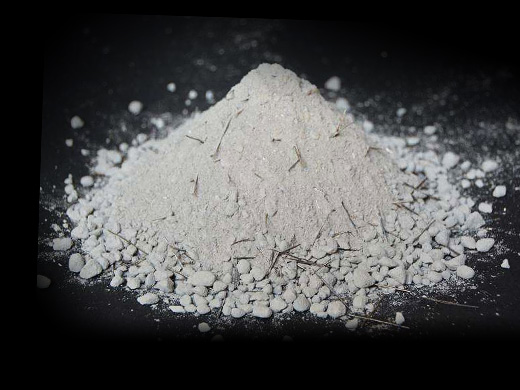News detail
What is the difference between refractory concrete and refractory castables
Definition and Composition
Refractory Concrete
Refractory concrete is a special type of concrete capable of withstanding high temperatures. It is typically composed of refractory aggregates (such as refractory brick sand and alumina clinker), cementitious materials (such as Portland cement and aluminate cement), appropriate admixtures, and water in a specific ratio. Essentially, it is a specialized form of concrete that emphasizes performance in high-temperature environments.
Refractory Castables
Refractory castables are a type of amorphous refractory material primarily composed of refractory aggregates, powders, binders, and admixtures. Compared to refractory concrete, refractory castables feature a wider variety of binders. In addition to cement binders, a variety of inorganic binders, such as water glass and phosphoric acid, are also available. Furthermore, the combination of ingredients can be flexibly adjusted to suit specific application requirements, enabling them to adapt to different high-temperature conditions.
Differences in Construction Techniques
Refractory Concrete
Generally, conventional concrete is constructed by first mixing the ingredients, then compacting them through methods such as vibration. However, during construction, particular attention must be paid to controlling environmental conditions such as temperature and humidity to ensure that its fire-resistant properties are not affected. Furthermore, refractory concrete requires a period of curing after construction. For example, when using Portland cement as the binder, it is typically moisturized and cured for several days to allow its strength to develop normally.
Refractory Castables
During construction, all raw materials are thoroughly mixed and then poured or rammed into the desired area for final shaping. This type of castable offers greater construction flexibility, effectively filling complex and irregular shapes. The appropriate construction method can be selected based on the specific situation. For example, self-flowing castables rely on gravity to fill the mold or construction area, eliminating the need for additional vibration, resulting in higher construction efficiency.
Differences in Performance Characteristics
Refractory Performance
Refractory concrete: Its refractory temperature is limited to a certain range. Generally speaking, ordinary refractory concrete can withstand relatively low temperatures and is primarily suitable for medium- and low-temperature industrial furnaces and other applications. This performance is primarily determined by the refractory properties of the selected binder and aggregate. However, appropriate material selection can improve its refractory temperature to a certain extent.
Refractory castables: Due to the flexibility in the selection of binders and aggregates, the refractory properties of refractory castables can be adjusted over a wide range, meeting various application requirements from low to high temperatures. For example, some high-purity corundum refractory castables can withstand extremely high temperatures and are commonly used in high-temperature critical areas such as steel and nonferrous metallurgy.
Strength Performance
Refractory concrete: Its strength development is similar to that of ordinary concrete. Initial strength growth is primarily dependent on the hydration of the binder, while later strength remains relatively stable. Its compressive and flexural strength indicators meet certain application requirements at room temperature, but may decrease to varying degrees as the temperature rises. This strength loss can be particularly significant under prolonged high-temperature conditions. Refractory castables: Different types of refractory castables have different strength characteristics. For example, some castables using high-strength binders and high-quality aggregates have higher strength at room temperature. In high-temperature environments, some castables can rely on high-temperature sintering and other effects to maintain good strength. The strength can even be improved within a certain temperature range, and the overall strength performance is more controllable.
Wear Resistance
Refractory concrete: Wear resistance primarily depends on factors such as aggregate hardness and gradation. Overall wear resistance is average, meeting service requirements in applications with relatively mild material flow. However, if subjected to high-speed, high-volume material flow, its wear resistance may not be sufficient to maintain structural integrity over time.
Refractory castables: Wear resistance can be improved by adjusting aggregate type and particle size and adding wear-resistant enhancers. Some refractory castables specifically designed for wear-resistant areas offer excellent wear resistance in harsh operating conditions such as material flow in blast furnaces and friction in cement kilns, ensuring a long service life.
Different Application Scopes
Refractory Concrete
This is commonly used in industrial furnace foundations and flues, where high requirements for shape regularity and relatively mild temperature conditions are required. This includes the base of small brick kilns and the linings of some residential heating stoves. Its relatively simple construction process and reasonable fire-resistant and heat-insulating properties make it effective.
Refractory Castables
This has a wider range of applications, encompassing blast furnaces and converters in the metallurgical industry, rotary kilns in the cement industry, and various high-temperature kilns in the ceramic industry. These applications are extensive, requiring complex shapes, high temperatures, and stringent requirements for refractory and wear resistance. We can provide customized materials with appropriate performance based on specific working conditions, ensuring smooth industrial production.



Send inquiry
Please Leave your message you want to know! We will respond to your inquiry within 24 hours!